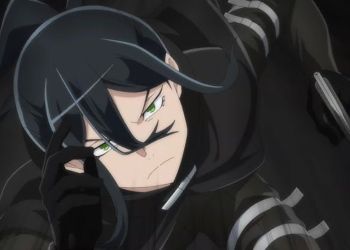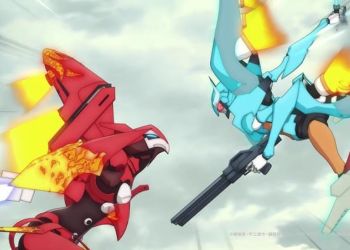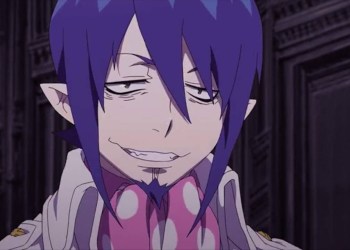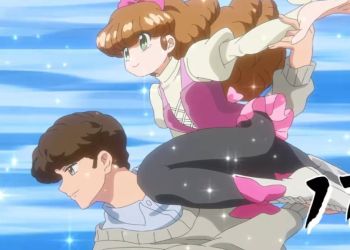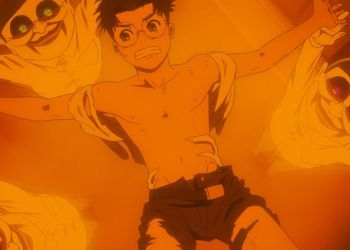Delving into the Distinctions: Manga And Anime
Manga and anime are the two most popular Japanese entertainment mediums. While they share common roots and storytelling components, they also have distinct traits that identify them apart. In this comprehensive examination, we will delve into the contrasts between manga and anime, shining light on the various artistic styles that have captivated viewers all around the world. Whether you’re a seasoned fan or fresh to the realm of Japanese pop culture, join us as we delve further into the fascinating tapestry of manga and anime.

1. Artistic Expressions
Manga and anime, two beloved genres of Japanese entertainment, are extremely popular around the world. While both mediums have a shared history and frequently adapt similar stories, they have unique artistic expressions that distinguish them. In this excursion, we will dig into the enthralling worlds of manga and anime, revealing the subtle distinctions between their artistic techniques. From panel layouts to character designs and visual storytelling strategies, we begin on a quest to discover the soul of their visual narratives.
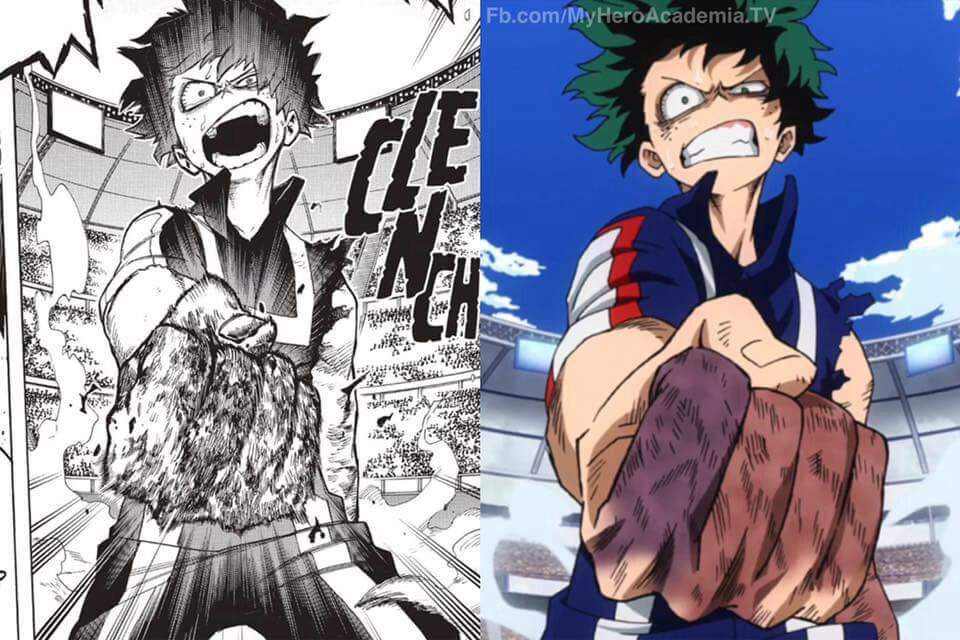
Distinctive Panel Layouts
Panel layouts in the manga are essential for controlling the reader’s reading speed and understanding of the narrative. A sense of rhythm and movement is achieved through the careful arrangement of panels, which frequently vary in size and shape. Manga relies mostly on static visuals to elicit feelings and advance the plot because it doesn’t use much animation. However, anime uses smooth transitions and dynamic camera angles to make scenes come to life. More cinematic narrative is possible when moving from panel to screen, with filmmakers using methods like panning and zooming to heighten the dramatic effect.
Mesmerizing Character Designs
A vital component of both manga and anime, character design provides a visual interpretation of the concepts and motifs of the narrative. Readers can fully immerse themselves in the story’s setting thanks to the manga’s finely detailed characters. Manga artists exhibit their creativity through their distinctive character designs, which range from exaggerated expressions to intricate outfits. On the other hand, anime’s vivid colors and smooth animation elevate character design to new heights.
On television, characters are given personality and emotion through their gestures and facial expressions, bringing them to life. Reputable artists are frequently partnered with anime studios to make sure that characters visually and emotionally connect with viewers.
Visual Storytelling Techniques
Both manga and anime focus heavily on visual storytelling, and each uses different strategies to draw readers or viewers in. The manga’s illustrators convey mood and atmosphere through panel composition, tempo, and visual cues. Manga’s capacity to generate emotions just through images captivates readers, whether they are reading silent panels or intense action sequences.
Conversely, anime uses animation’s ability to bring stories to life in rich detail. Anime meticulously creates worlds of surprise and excitement for its viewers through voice acting, sound design, and animation. Directors frequently play around with different visual storytelling approaches, such as symbolism and surreal imagery, to push the limits of the genre and captivate viewers.
Using this investigation, we can acquire a more profound understanding of the intricate fabric of manga and anime, honoring their unique creative approaches and the limitless creativity they inspire.
2. Pacing and Storytelling
Even while both media have similar beginnings and frequently adapt the same themes, they differ in the way they pace and develop their storylines. To shed light on the techniques each medium uses to captivate and interest viewers, we will analyze the dynamic contrast between manga and anime in terms of pacing and storytelling in this research.
Manga’s Pacing Strategies
Since manga is a static medium, the way the panels interact with one another determines how quickly the story moves along. The pacing of manga is frequently more intentional and regulated because each page is painstakingly created by the mangaka (manga artist). Manga panels provide readers the opportunity to linger over important events, take in minute details, and relish the feelings that the characters portray. Because of the thoughtful pacing, readers may choose their own pace and become completely engrossed in the narrative.
Anime’s Approach to Pacing
Anime, on the other hand, uses timing, music, and motion to set the pace. Anime has the potential to provide viewers a more dynamic and engaging experience with the incorporation of animation, voice acting, and music. Anime can create tension, arouse feelings, and advance the plot in a visually captivating way by employing cinematic devices including camera angles, transitions, and dialogue pace. Because anime has to keep viewers interested and entertained, the speed is frequently faster.
Whether it’s through the energetic animation of anime or the thoughtful panel arrangement of manga, both media thrive at creating engrossing stories that have a lasting effect on viewers all around the world.
3. Character Development
Character development is fundamental to storytelling because it gives stories vitality and draws listeners in. Two popular Japanese entertainment genres, manga and anime, use their special talents to create fascinating character arcs. This blog examines the subtle distinctions in character development between manga and anime, focusing on the effects of pacing, filler episodes, and visual signals.
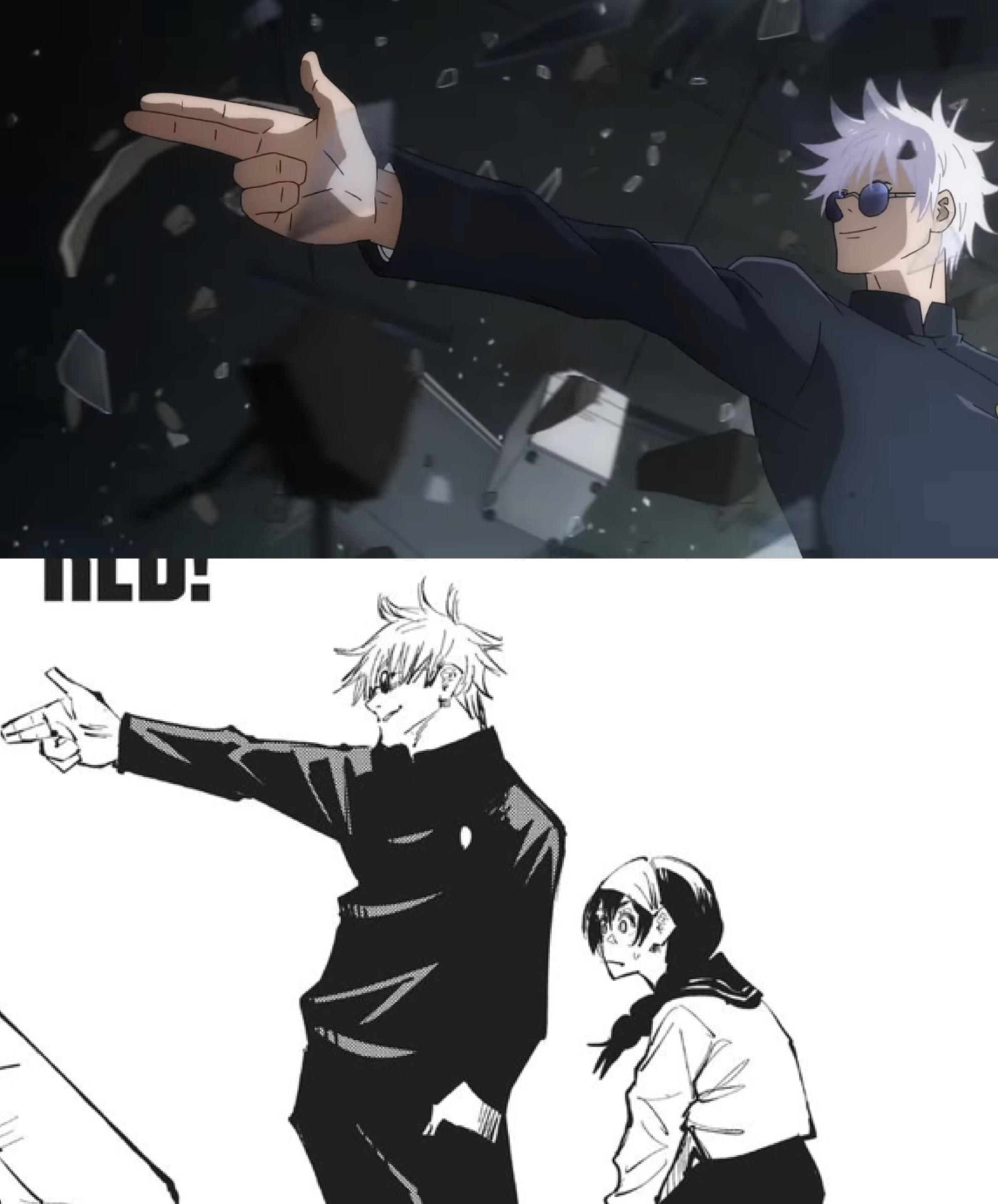
The Paradox of Pacing
The manga’s pacing frequently depends on how quickly the reader reads, which makes character development more intimately and carefully explored. Readers can linger over panels, taking in each element of a character’s journey and developing a strong emotional bond. On the other hand, screen time determines the rhythm of anime, which results in condensed character arcs and occasionally sacrifices depth for brevity. We learn how characters are sculpted at different tempos in manga and anime by exploring the subtleties of pace.
Irregular Episodes
Common in anime, filler episodes can help or hurt character development. They offer chances for side storylines and more character development, but they also frequently obstruct the primary narrative flow and impede character development. Filler is less common in the manga, which makes it possible to concentrate more tightly on character arcs without interfering with the story. Examining the function of filler episodes reveals the fine line that must be drawn between advancing character growth and preserving story momentum.
Visual Indications
In both manga and anime, visual signals are crucial to character development since they mold characters’ personalities and emotions. Manga uses emotive character designs and meticulous artwork to portray subtle nuances in still images, leaving viewers to speculate about the motivations and feelings of the characters. Anime, on the other hand, uses voice acting, motion pictures, and a soundtrack to enhance character depictions and bring the story to life. We discover how manga and anime give their characters a sense of realism by analyzing the significance of visual signals.
4. World-Building
The craft of world-building is essential to storytelling in both media, whether it be on the busy streets of futuristic cities or in the magical forests of mysterious regions. Manga and anime, however, create these immersive worlds in different ways, which has a significant impact on the narrative experience. We’ll explore the disparate methods used by manga and anime to create intricate and compelling worlds in this investigation.
The Art of Setting the Stage
The location functions as the canvas on which the plot is painted in both manga and anime. Manga sometimes uses elaborate background designs and finely detailed illustrations to create the mood of a specific location. Manga artists painstakingly construct each panel to evoke a feeling of place and atmosphere, whether it is the expansive expanses of a post-apocalyptic wasteland or the warm interiors of a charming rural inn.
In contrast, anime uses animation to bring these settings to life and draws viewers into the story’s universe through the use of sound design, lighting, and backdrop art. Anime directors employ both visual and audio cues to generate a visceral sense of place, ranging from sweeping aerial vistas that depict the grandeur of a busy metropolis to intimate close-ups that reveal the hidden secrets of an isolated forest.
Manga’s Multifaceted Worlds
Manga has a special ability to examine a wide range of cultures and traditions by incorporating fanciful aspects into real-world conventions as inspiration. Manga authors skillfully include cultural details in their works, enhancing the world-building process, whether it’s the elaborate manners of a feudal samurai society or the colorful festivals of a futuristic cyberpunk city.
Manga takes readers to worlds full of realism and complexity by paying close attention to details in character design, attire, language, and architecture. Manga encourages greater awareness and appreciation of the rich diversity of the human experience by engrossing viewers in the rituals and traditions of many nations.
Anime’s Dynamic Realms in Motion
Through dynamic animation, anime enhances the immersive power of world-building and gives fictitious realms a vivid new lease on life. Anime takes viewers to vibrant, dynamic worlds with vivid movements, emotive character animation, and dynamic camera work.
From the busy streets of a busy city to the placid beauty of a peaceful countryside, anime makes use of the visual and aural qualities of the medium to create immersive, imaginative worlds that pique the interest of viewers. Anime directors create immersive worlds that linger with viewers long after the screen goes blank by utilizing color, lighting, music, and sound effects.
Establishing Narrative Guidelines
The creation of norms and regulations that control the dynamics of a fictitious universe is essential to good world-building. Manga authors are free to explore the complexities of their world in great detail, painstakingly creating mythology, lore, and social structures that influence the plot.
Conversely, anime has to strike a balance between tempo and length, frequently simplifying or changing intricate world-building details to make them fit within the episodic storytelling format. Despite these constraints, anime directors come up with inventive ways to use character interactions, exposition, and visual storytelling to convey crucial world-building data.
5. Fan Communities
Fan communities are vibrant centers where manga and anime fans gather to talk about, analyze, and celebrate their favorite shows. Fans can express their ideas, beliefs, and works in these communities, which can be found on forums, social media sites, or specialized websites. Between manga and anime, though, these communities can have very different dynamics.
Manga fans frequently engage in lively debates regarding serialized chapters, where they speculatively explore potential story arcs, character arcs, and plot twists. Fans in these communities look forward to each new chapter release so they can participate in heated conversations and debates. These communities thrive on suspense and conjecture.
However, fan groups for anime tend to be more event-driven, with conversations focused on the release of new episodes, the start of new seasons, and significant story points. During the seasonal anime debuts, these groups come alive with anticipation as fans gather to discuss, speculate, and exchange fan art in real-time.
Realm of Fan Fiction
Fans can explore alternate storylines, character interactions, and universes outside of the canon through fan fiction as a creative outlet. Fan fiction is thriving in the manga and anime genres as fans creatively retell their favorite tales and characters in a myriad of inventive ways.
Fanfiction about manga frequently explores “what if” scenarios and imaginatively bridges the narrative gaps between chapters. To add more dimensions to the storyline that the original mangaka woven, fans create fan fiction in which they examine character backstories, create romantic pairings, or imagine different endings.
On the other hand, fan literature about anime is typically more visually oriented, with creators of fan art, animations, and AMVs (Anime Music Videos) taking inspiration from the animated versions. These works highlight the skills of fans who use their artistic perspectives to reimagine scenes, characters, and themes, giving anime series’ visual storytelling additional depth.
Fan Theories and Speculation
Within the manga and anime communities, fan theories and speculative writing are a major part of the fan interaction landscape, generating conversations, arguments, and excitement. Enthusiasts meticulously analyze each element, ranging from nuanced hinting to obscure hints, to uncover concealed implications and potential story arcs.
As fans pore over each chapter looking for clues and Easter eggs provided by the mangaka, they frequently analyze panel layouts, subtle language, and visual symbolism, leading to the creation of manga fan theories. These hypotheses cover a wide range of topics, from extensive conspiracy theories about the underlying mysteries of the tale universe to predictions about character motivations.
As fans closely examine each frame of anime for hints and insights, fan theories frequently arise in response to adaptation decisions, animation styles, and soundtrack cues. Original story arcs and filler episodes that are only seen in anime provide rise to discussions on their canonical relevance and effects on the overall plot.
6. Cultural Representation
These media present distinctive viewpoints on Japanese culture, customs, and social issues through representations of both fantasy experiences and ordinary life. But there can be big differences in how these qualities are portrayed in manga and anime, which begs the question of cultural interpretation and authenticity. We set out on a trip to examine the subtle distinctions between the representations of Japanese culture and society in manga and anime in this blog, illuminating the authenticity and interpretation inherent in each form.
Canvas of Tradition and Diversity
Manga offers a detailed depiction of Japanese culture and customs with its wide range of genres and visual styles. Manga is a medium in which cultural quirks are painstakingly weaved into stories, ranging from modern slice-of-life tales to historical dramas. Readers are given an insight into the complex fabric of Japanese society with each panel, which embodies the essence of Japanese living in everything from contemporary cityscapes to traditional ceremonies.
Manga is known for its thorough attention to detail, which is frequently the hallmark of cultural authenticity. This is seen in the depictions of traditional clothes, regional languages, and customary ceremonies. Artists employ their skills to bring authenticity to their creations, drawing from personal insights, historical knowledge, and real-life experiences. Manga thus becomes more than just a kind of amusement; it also becomes a cultural relic that captures the rich history and customs of Japan.
Bridging Fantasy and Reality
Anime, being a dynamic visual medium, can vividly and immersively bring stories to life. With animation, artists may delve deeply into cultural topics and combine fantastical and realistic elements to craft engrossing stories. Anime breaks the boundaries of reality, presenting a distinctive perspective on Japanese society and culture through fantasy worlds and future settings.
Compared to manga, cultural representation in anime frequently adopts a more stylized and interpretive approach. Some television shows aim to reflect Japanese customs and traditions authentically, while others employ creative license to improve narrative or appeal to a worldwide viewership. The fusion of realism and interpretation yields a variety of views of Japanese culture in animation, spanning from customary tales to modern societal concerns.
Authenticity vs. Interpretation
Manga and anime are both types of cultural representation, yet they differ greatly in how they approach authenticity and interpretation. Manga frequently places a high value on authenticity, aiming to accurately and painstakingly depict the subtleties of Japanese society. Authors frequently use historical information and personal experiences in their works to give them a cultural authenticity that appeals to readers.
Conversely, anime welcomes interpretation, using animation and visual narrative to creatively tackle cultural subjects. Some anime strictly follow national customs and conventions, while others use their imagination to create captivating stories that cut over cultural barriers. Because of its interpretive flexibility, anime can speak to a wide range of viewers globally by presenting ideas and feelings that are universal to all cultures.
7. Legacy and Influence
The vivid narrative techniques have left a lasting impression on popular culture by winning over audiences’ hearts and minds all across the world. The legacy of renowned manga and anime series, from beloved classics to modern masterpieces, resonates through generations, inspiring new writers and influencing the entertainment industry’s constant change.
Innovation
There are many trailblazing icons in the manga and anime worlds whose avant-garde creations have pushed the frontiers of creativity and established new benchmarks. This innovative tradition is best illustrated by works such as “Akira,” written by Katsuhiro Otomo, and “Astro Boy,” authored by Osamu Tezuka. Tezuka’s innovative methods transformed the manga industry, while Otomo’s imaginative narrative opened the door for a new chapter in the history of anime. Their contributions enthralled audiences as well as encouraged a great number of artists to pursue uncharted creative territory.
Cultural Bridges
Strong cultural bridges are created by manga and anime, which introduce individuals from different origins to the rich tapestry of Japanese culture. Television shows such as “Dragon Ball” and “Sailor Moon” have become international sensations, promoting a profound understanding of Japanese customs, mythology, and social ideals. Manga and anime have built ties across continents, igniting cross-cultural conversations and developing mutual understanding via the common language of storytelling.
Evolving Trends
Famous manga and anime series have shaped modern narratives across a variety of media for a long time, even after their initial release. Titles such as “Pokémon” and “Naruto” had an impact on a wide range of media, from video games to live-action adaptations. These franchises have left a long impact by inspiring not only spin-offs and reimaginings but also storytelling strategies, character archetypes, and thematic aspects in modern narratives.
The legacy of manga and anime may be most profoundly felt in its ability to inspire new generations of creators. Many writers, animators, and painters have drawn inspiration from the works of masters such as CLAMP, Hayao Miyazaki, and Rumiko Takahashi. Their inventive worlds and captivating characters have sparked the creative spark in aspirational talent all over the world, supporting a flourishing community of storytellers who are always pushing the limits of innovation and artistic expression.
Global Impact
Manga and anime have become cultural ambassadors in a world growing more interconnected by the day, changing the worldwide entertainment scene. The diffusion of Japanese pop culture is evident in the growth of cosplay gatherings and conventions as well as the abundance of streaming services devoted to anime. Manga and anime change with every new generation of fans, adjusting to new technology and tastes while maintaining their enduring appeal and cultural relevance.
8. Merchandising and Marketing

Cosplay costumes, plush toys, posters, keychains, and other items are all part of the vast creative and commercial realm that is manga and anime merchandising.
Harnessing the Power of Fan Engagement
Anime and manga are more than just entertainment; they are cultural phenomena that foster strong emotional bonds among followers. Anime studios and manga publishers understand how critical it is to cultivate these relationships and use them to propel merchandise success.
Because manga is serialized, it frequently creates suspense through character development and cliffhangers, which attracts a devoted fan following ready to acquire memorabilia with their favorite characters and moments. Conversely, by its visually striking animation, catchy music, and engaging storytelling, anime increases audience engagement and generates an emotional response that leads to goods purchases.
Crafting Compelling Characters and Worlds
The enthralling characters and intricately created settings that manga and anime depict are fundamental to their appeal. Manga is great at developing characters and creating a universe; it captivates viewers with carefully thought-out stories that take place across several chapters and volumes.
This depth satisfies fans’ need to own tangible pieces of their favorite manga universes by enabling manga merchandisers to offer a wide range of products, from intricate figurines to replica props. Anime vividly and sonically brings these worlds to life in a way that viewers find extremely compelling. Opportunities for merchandising are abundant since anime studios take advantage of character popularity by providing a wide range of goods, such as apparel, accessories, and collectibles, enabling fans to fully immerse themselves in their preferred anime series.
Embracing Digital Domains
Manga and anime have embraced new channels for marketing and commercialization in an increasingly digital environment. Manga publishers use digital platforms to promote items through targeted online marketing and partnerships, as well as to provide users with easy access to exclusive digital material and manga chapters.
Anime companies utilize streaming services to expand their reach globally and engage fans with interactive social media campaigns, virtual events, and simulcasts. With the help of digital merchandising, which includes virtual products, online subscriptions, and downloadable material, manga, and anime fans can now support their preferred franchises easily and conveniently while also extending the reach of items beyond traditional retail channels.
Cultivating Community and Collaboration
A thriving community of fans, producers, and collaborators who join together to celebrate their common hobbies lies at the core of manga and anime merchandise. Through fan gatherings, conventions, and partnerships with artists and influencers, manga publishers and anime studios cultivate this feeling of community and provide fans with exclusive chances to interact with the minds behind their beloved shows.
The reach of manga and anime items is further increased through partnerships with fashion labels, toy firms, and entertainment businesses. These partnerships reach new markets and demographics and strengthen the cultural influence of these cherished media.
9. Challenges of Adapting Anime to Manga
The most common focus when discussing adaptation is the conversion of written works into visual medium. This one-way street isn’t usually how the journey goes, though. Manga authors face a whole new set of obstacles when they transfer anime programs into manga format. We’ll go deeply into the complex process of translating animation into manga in this blog. We will explore the underlying intricacies, ranging from the change from motion to static images to its ramifications on storytelling and visual presentation.
Capturing Motion in Stillness
Capturing the impression of motion that animated sequences have and transferring it into static visuals is one of the biggest challenges in translating anime to manga. Characters in anime dynamically move about the screen, and action scenes happen in real time. But in manga, artists have to use a sequence of still panels to evoke the same impression of movement. To preserve the flow and intensity of the original animation, careful consideration of tempo, panel arrangement, and visual clues is necessary.
Conveying Emotion through Imagery
Storytelling requires emotion, and anime frequently uses nonverbal clues like body language, facial expressions, and background music to suggest the emotions of its characters. Manga creators have to figure out how to convey the same intensity of feeling with just still images when translating anime to manga. This can be difficult because all they have to work with is composition, line work, and shading to convey the subtleties of every character’s feelings and the mood of every scene.
Extensive action scenes, dynamic camera angles, and extravagant set pieces are common in anime films, all of which enhance the overall movie experience. But to translate these intricate images into manga format, abstraction and simplification must be maintained without compromising impact or clarity. To maintain the spirit of the original animation while taking into account the restrictions of the medium, artists have to carefully consider which components to emphasize and how to arrange them within the page’s boundaries.
Maintaining Consistency with Source Material
Maintaining integrity with the original content while adding new aspects or developing old ones is another issue in translating anime to manga. To improve the manga adaptation, creators must find a balance between adhering to the original plot, character designs, and aesthetics and incorporating their unique artistic vision. To make sure that the manga adaptation feels like a logical continuation of the anime rather than a disconnected reimagining, this calls for a thorough comprehension of the source material and an acute attention to detail.
Addressing Audience Expectations
When it comes to adaptations, audiences frequently have preconceived notions, particularly when hopping between different media like manga and anime. To engage both current fans and new ones, creators must be aware of these expectations and work to either fulfill or surpass them while also providing something unique and captivating. To create a manga adaptation that appeals to readers and maintains the original anime’s essence, a careful balancing act including the tempo, characters, and visual presentation is needed.
Manga authors can create manga adaptations that pay tribute to the original anime while providing readers with something fresh and interesting by recognizing the particular problems involved and tackling the adaptation process creatively and diligently.
10. Dynamic Evolution
The process of adaptation—the change from manga, a static but visually striking storytelling format, to anime, a dynamic and engrossing animation medium—lays the foundation of this relationship. We go deeply into the intricacies of story adaptation in this investigation, illuminating the difficulties and imaginative choices that mold this life-changing experience.
Essence of Manga Storytelling
Manga acts as the model for anime adaptations thanks to its distinctive fusion of narrative complexity and visual elegance. The precisely drawn panels of mangaka (manga artists) bear the burden of world-building, character development, and narrative. However, the shift from manga to anime necessitates rethinking this rigid storyline to create a fluid and dynamic form. Understanding the fundamentals of manga narrative reveals the complex network of feelings, behaviors, and expressions that serve as the basis for anime adaptations.
Challenges in Translation
One of the biggest obstacles in the manga-to-anime conversion process is the conversion of still images into flowing animation. A careful balance must be struck to incorporate movement and liveliness without compromising the original artwork’s originality. Manga panels’ rhythm, arrangement, and visual clues must be rewritten to fit the dynamic style of animation. It takes a deep comprehension of both media and a desire to experiment while adhering to the original work to close this gap.
Bringing Manga to Life
The imaginative decisions that give the story life are fundamental to the manga-to-anime conversion process. Everything from voice acting and soundtracks to character designs and animation techniques influences the anime’s overall mood and ambiance. Creators may improve the visual spectacle, heighten emotional resonance, and explore new storytelling dimensions by embracing the inherent capabilities of animation. These imaginative decisions capture the spirit of anime adaptation by striking a balance between artistic innovation and faithfulness to the original work.
Impact on Narrative Structure
Narrative structure and pacing must be reevaluated while going from manga to anime. Manga lets readers control the story’s pacing by turning pages, but anime shows events in real-time and immerses viewers in a meticulously planned series of events. Maintaining narrative coherence and audience involvement requires several important considerations, such as converting manga arcs into episodic formats, adding filler episodes, and rearranging the scheduling of important scenes. These choices have an ongoing effect on the adaption, influencing the whole watching experience.
From Concept to Screen
From concept to screen, the anime adaptation of manga is a dynamic process. It starts with a thorough examination of the original work, highlighting major themes, character relationships, and visual elements. The adaptation comes to life via the creative vision and passion of its directors, animators, writers, and voice actors working together. Manga’s static pages are given movement, emotion, and vitality via experimentation, iteration, and close attention to detail, resulting in a dynamic narrative experience that enthralls viewers everywhere.
Creators give beloved stories new life through a painstaking process of translation, creativity, and teamwork. This allows them to captivate audiences with immersive storytelling that goes beyond the realm of the imagination. We honor the enduring history of adaptation and the transformational power of storytelling as we investigate the changing relationship between manga and anime.
